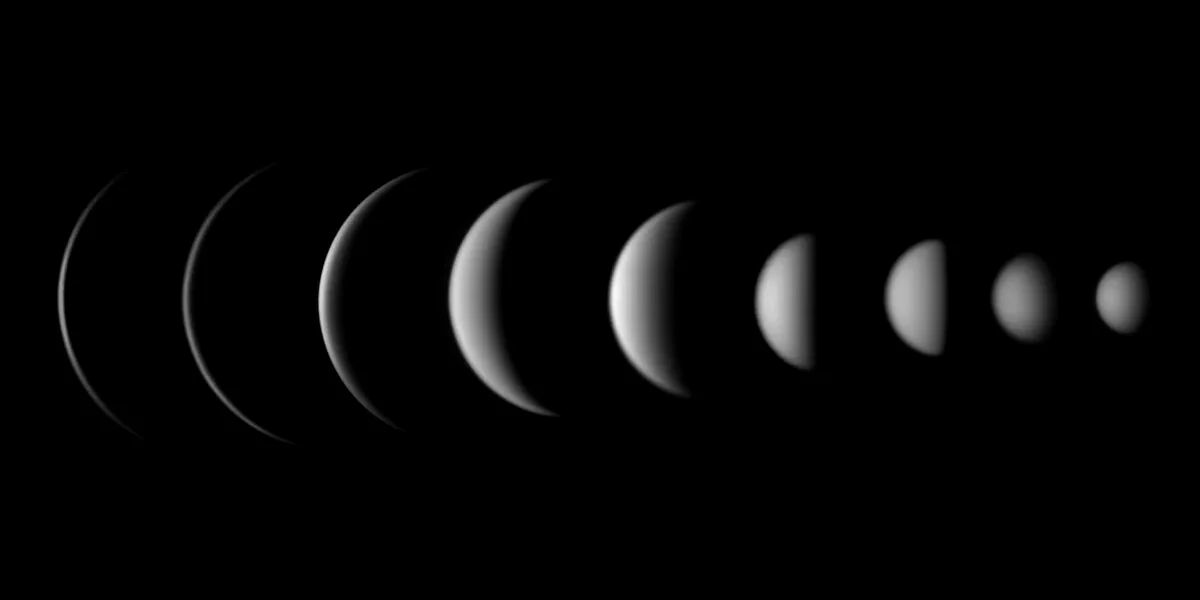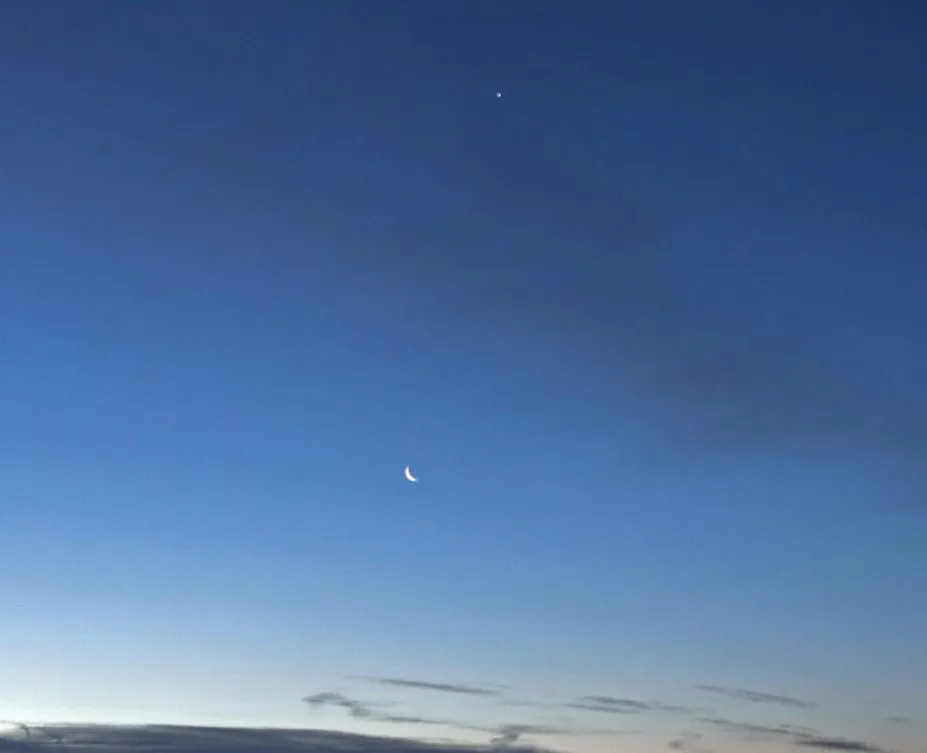Venus reaches dichotomy, when it will be 50%-illuminated, on 4 June – in theory at least.
In practice, when Venus is in the evening sky this occurs a few days earlier than prediction, due to atmospheric ‘adjustment’, a phenomenon known as the Schröter effect.
The evening 50% phase represents the transition from a gibbous Venus into a crescent Venus, and where this planet is concerned, its crescent is very beautiful indeed.

A good challenge for the coming weeks as we head into June 2023 is to follow the development of the phase as the crescent gets thinner.
Because we're dealing with daytime observing here, a word of caution: never observe or image the Sun withthe naked eye or any unfiltered optical instrument.
Similarly, take great care when observing other targets with optical equipment after sunrise. If in doubt, do not attempt it!

Finding daytime Venus
You might think that Venus isn’t hard to find and the crescent is easy to see through a telescope.
While both statements are true, the position of Venus in the evening sky deteriorates through June, its altitude and stability degrading as a result.
The best way to view it is to find it during the day. You can either use your telescope’s Go-To computer or old-school setting circles, but the net result is a higher planet with a more stable view of the crescent.
Caution needs to be taken because the Sun will be above the horizon and relatively close.
Never attempt to find Venus near the Sun unless you really know what you are doing and take maximum precautions.
Failure to heed this warning could lead to equipment damage or, even worse, damage to your eyes.

Photographing daytime Venus
If you’re an imager, a daytime view of Venus can be stabilised further by using an infrared-sensitive camera with an IR-pass filter fitted.
This will dim the surrounding blue sky and give a view of the planet less affected by seeing.
A high-frame-rate camera is idea for this. Capturing a few thousand short exposures will allow you to process the results in registration-stacking software such as RegiStax or AutoStakkert! to produce sharp renditions of the planet that can then be tweaked using your favourite graphics editor.
For multiple captures, it’s essential to record the date and time against each image to avoid confusion when you come back to them later.
A common way to display the results is to combine them in a composite image showing the daytime sequence.
If you are able to take many daytime images of the planet you’ll see the phase decrease, and the planet’s apparent size increase to reveal the full beauty of that spectacular crescent.
Recording the crescent’s development becomes addictive, but remember that every day closer to inferior conjunction on 13 August brings a need for increased caution as the planet–Sun distance is decreasing too.
It is possible to follow Venus through inferior conjunction in August, but it will be just 7.7° from the Sun when this occurs.
If you've managed to photograph Venus, don't forget to send us your images.
This guide originally appeared in the June 2023 issue of BBC Sky at Night Magazine.
